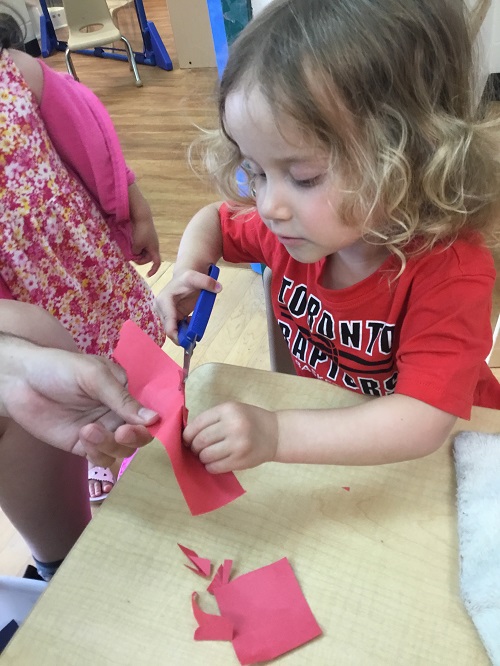Dr. Maria Montessori wrote in her book, The Absorbent Mind: “Discipline is born when the child concentrates his attention on some object that attracts him and which provides him not only with a useful exercise but with a control of error.” In other words, it is crucial in early childhood development to provide young children with activities that are truly interesting in order to encourage the growth of the ability to focus, and to allow them the space to make mistakes. As an educator, I like to borrow from the philosophy of fostering independence through practical life skills that adults consider very ordinary. Every family has likely experienced this in some way and at some point with their children: the tasks that we carry out every day, even (if not especially) the chores that we don’t necessarily enjoy doing, such as washing dishes, sweeping the floor, and folding clean laundry fascinate the young ones. They have a strong desire to be part of the processes they see repeated over and over again, in part because the idea that they too can become big, strong, and capable enough to do it for us, rather than have us do it for them, is immensely attractive to the growing mind.
It’s with this philosophy in mind that the toddlers were challenged with a cutting activity for the second time this year. Handing out scissors can be risky business in a room of toddlers, as it only takes a moment for someone to lose a chunk of hair. However, like sweeping or folding laundry, cutting paper is something the children watch us educators do quite a lot, making it something they’re interested in proving they can do, too. For toddlers, cutting with scissors is an exercise in grip strength, hand-eye coordination, coordination of both hands, and the focus it takes to see a task from beginning to end in one sitting. The interest in the challenge of mastering these motor skills naturally create the opportunity to enhance attention span as the toddlers feel determined to complete the task.
The other major component to independence is the freedom to do things wrong. In this context, so long as the children were using their scissors safely, there wasn’t really a “wrong”; I didn’t interfere or try to correct them. I wanted them to discover for themselves what hand felt the best and what method yielded results they felt proud of. I watched with interest as they tried different grips and angles or even switched from using one hand to the other, exploring how it felt. If a child asked for help, I held the paper steady for them so that they could focus on squeezing their scissors. Two of the children sitting near me saw me do this and started to do the same for each other, weaving social skills into their own learning as they displayed an inherent understanding of the importance of helping others. As for those who didn’t ask for help, I watched them alternate between holding the paper in their free hand and bringing it partway over the edge of the table, experimenting in ways to work independently with deep focus, until a piece was cut and they held it up to me with the exclamation of “I did it!”
Using scissors is an example of a pre-writing activity because of the hand-eye coordination and fine motor factors, but the toddlers demonstrated how valuable an activity like this is for building the confidence to do things on their own.










